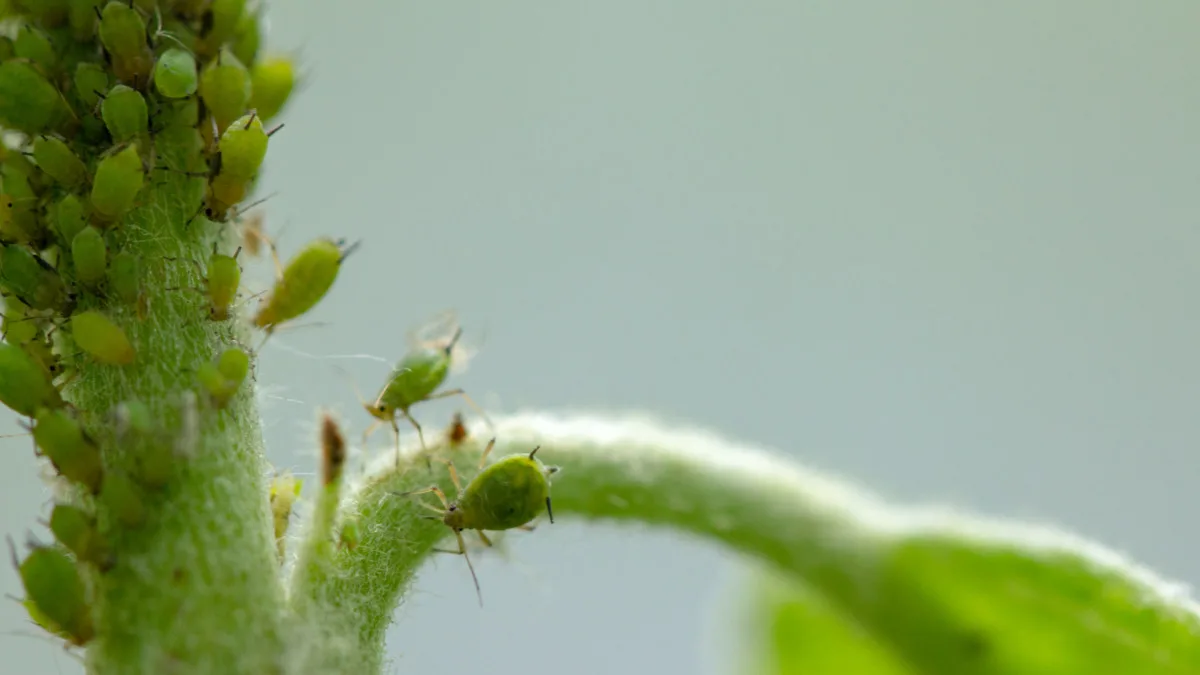
Out of all the pests that can plague a garden, aphids are just the worst.
They don’t munch on the leaves or fruit but literally suck the life out of plants.
As they grow their colonies and gorge themselves on food crops and ornamentals alike, plants can become weakened and disfigured.
Even if the damage they do to plants is minor, aphids carry and spread some serious plant diseases.
Between direct and indirect damage, and how insanely quick they reproduce, aphids are some of the most destructive pests to contend with over the summer months.
About Aphids
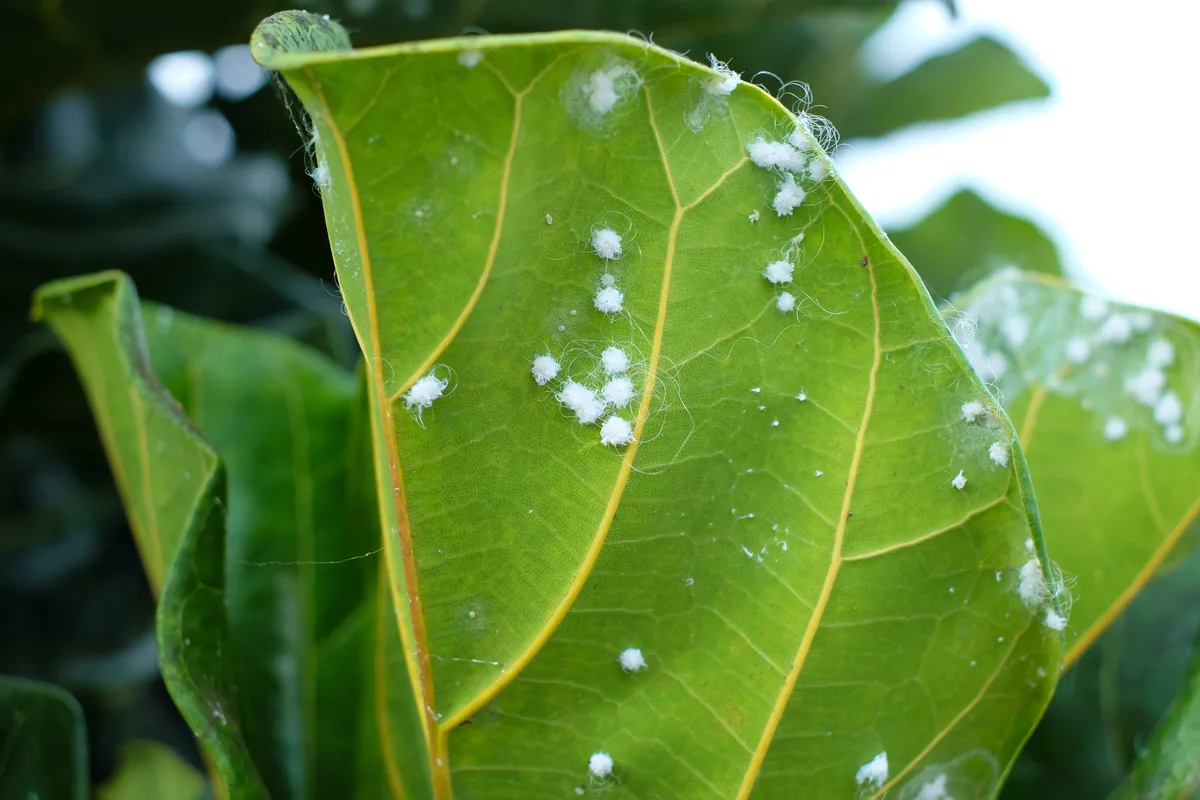
There are about 5,000 species in the Aphididae insect family, and all of them subsist on the nutrient-rich sap from leaves, twigs, stems, or roots of plants.
Some aphid species are generalists that will feed on a variety of plants and some are specialists that will only attack specific plant families.
Cabbage aphids love cruciferous plants. Potato aphids favor nightshades including peppers and tomatoes. Melon aphids enjoy cucurbits as well as asparagus, eggplant, and pepper. Green peach aphids will also heartily attack hundreds of other food crops and flowers. Woolly aphids feed mostly on trees, especially apple and pear. There’s rose aphids, oak aphids, and spirea aphids – an aphid for every plant!
Aphids are tiny, from 1/16 to 1/8 of an inch long, with soft, pear-shaped bodies. Many species are green, but aphids can also be black, red, yellow, brown, pink or gray.
They are distinguishable by their needle-like mouthparts that pierce plant tissue to siphon up the sap. All aphids also have two tubes sticking out of their rear ends, called cornicles, which excrete sticky honeydew.
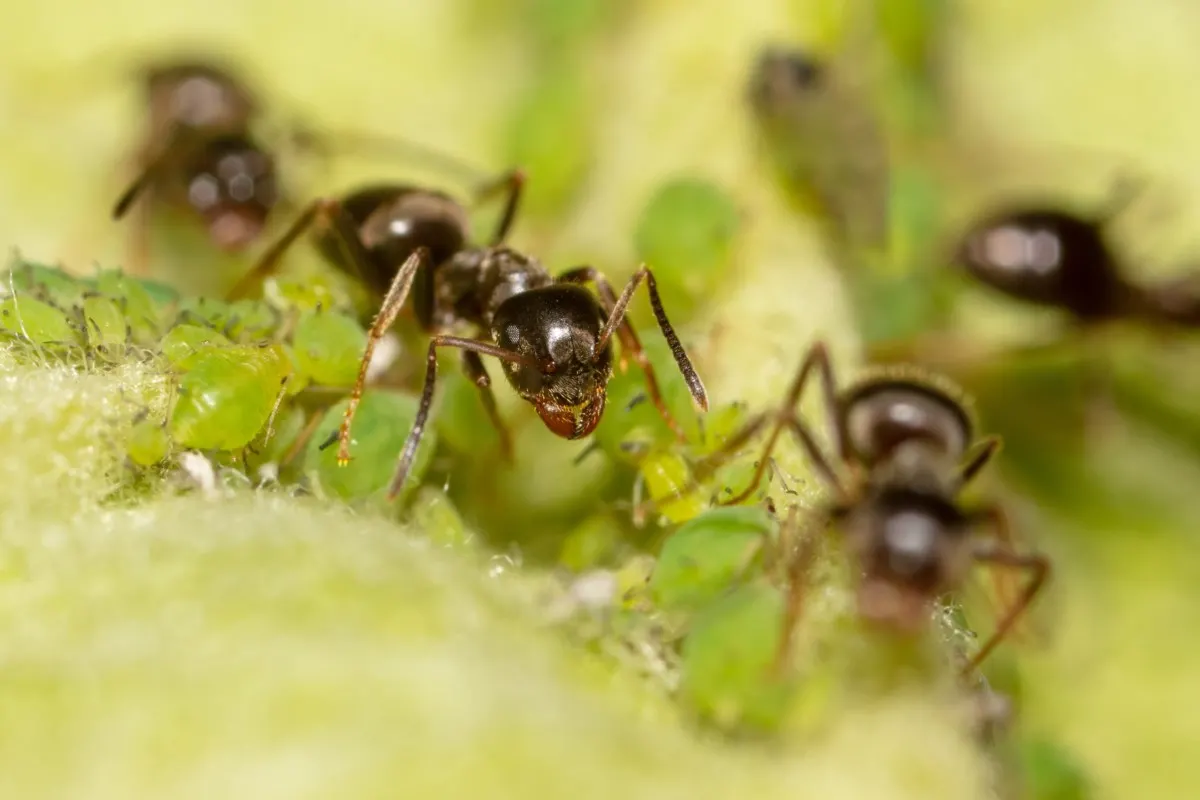
Honeydew is one of the aphid’s few defenses against predators. The clear sugar-rich substance is a highly desirable food source for ants. They will collect it in a flurry from deposits left on the foliage, and the more industrious ones will even milk aphids for their honeydew.
This mutualistic relationship aids the aphids since the mere presence of ants is often enough to keep their predators away.
The Aphid Life Cycle
The typical life of an aphid begins in spring when female nymphs emerge from eggs laid the previous season.
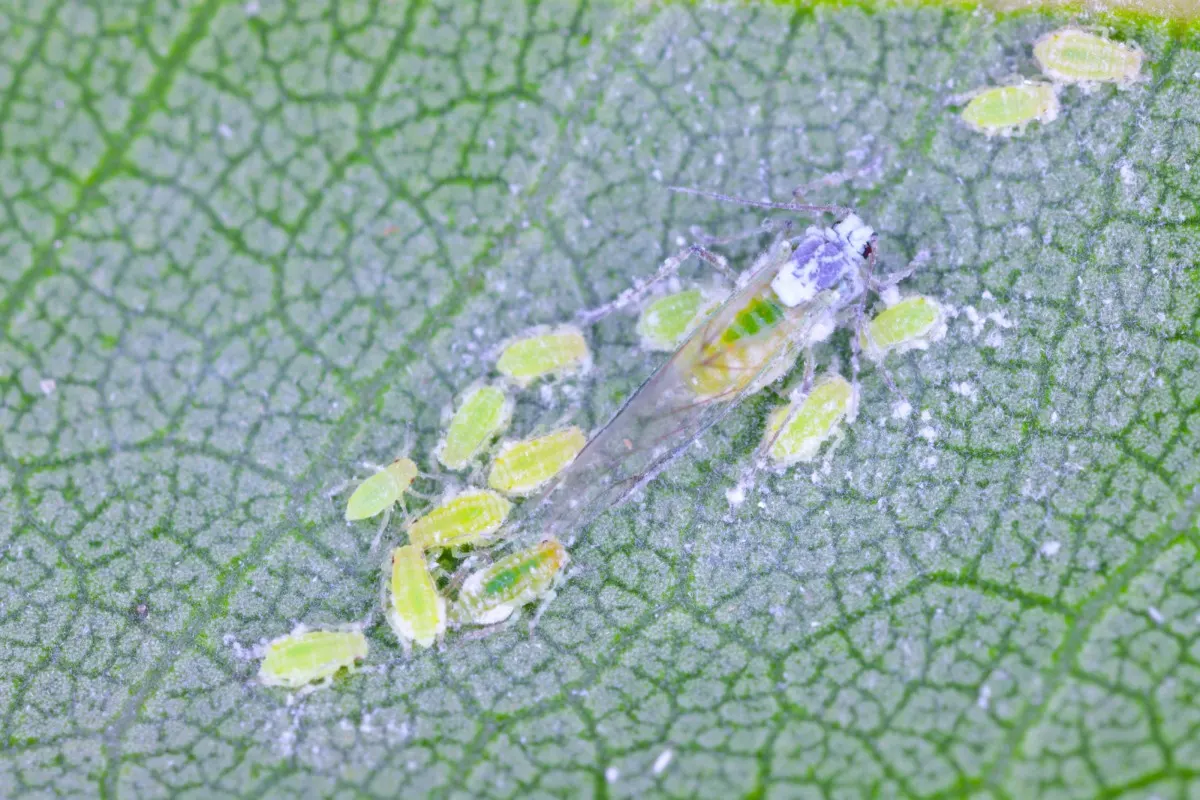
Known as “stem-mothers”, the nymphs will quickly mature into wingless adults and give birth to live young without the need for mating.
In as little as two weeks, one female aphid can birth 50 to 100 nymphs. As these nymphs mature into adults, they will do the same.
Fifteen – or more – aphid generations can be produced in a single season.
When things start getting crowded, or when the host plant declines in health, some nymphs will develop wings to fly to another host and seed a whole new multi-generational colony.
When the weather turns cooler in fall, winged male nymphs will finally be born. Once this happens, the female aphids will no longer be capable of giving live birth and will now need a mate to reproduce.
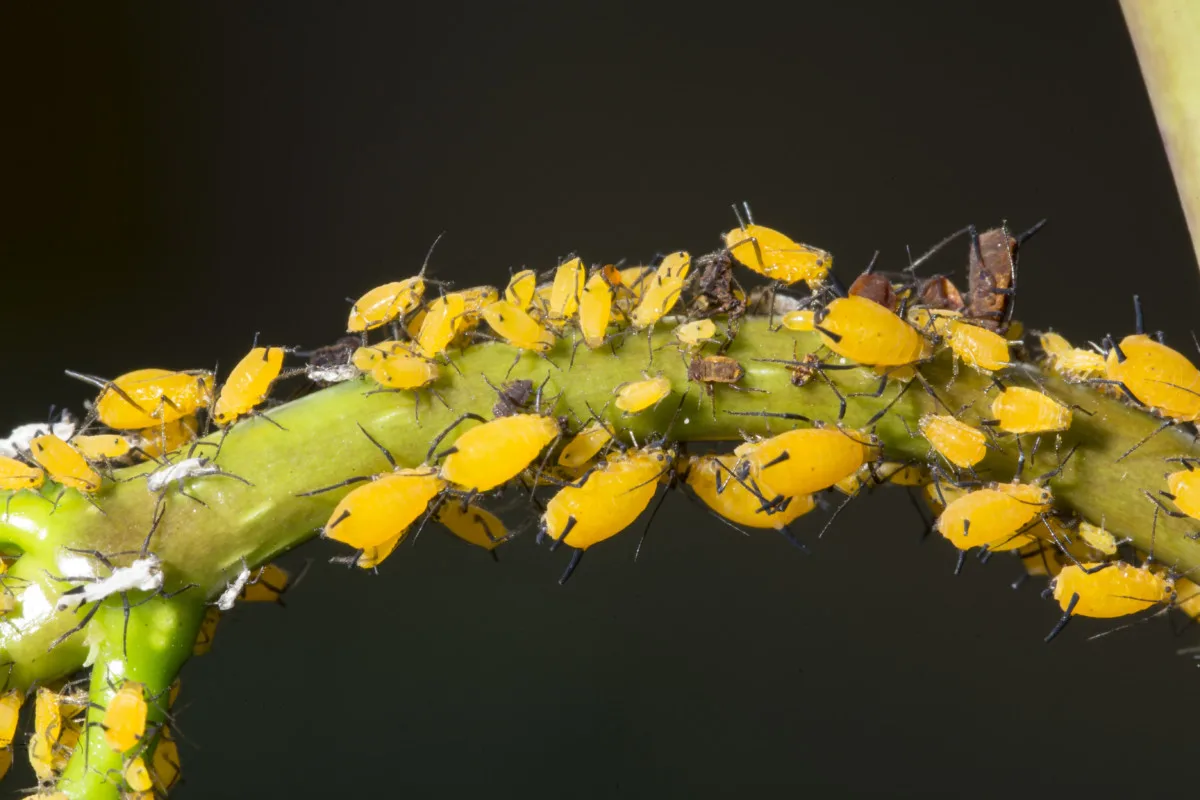
Females will deposit tiny, black, oval-shaped eggs on perennial plants and other plant debris to overwinter. They can be spotted attached to the underside of leaves, along plant stems, and within nooks and crevices of the host plant.
5 Signs of an Aphid Infestation
The very beginning of an aphid infestation usually starts small and only on one plant. Left unchecked, aphids will multiply quickly and spread like wildfire through the rest of your garden.
Minimize the damage by detecting colonies early. Here’s what to be on the lookout for:
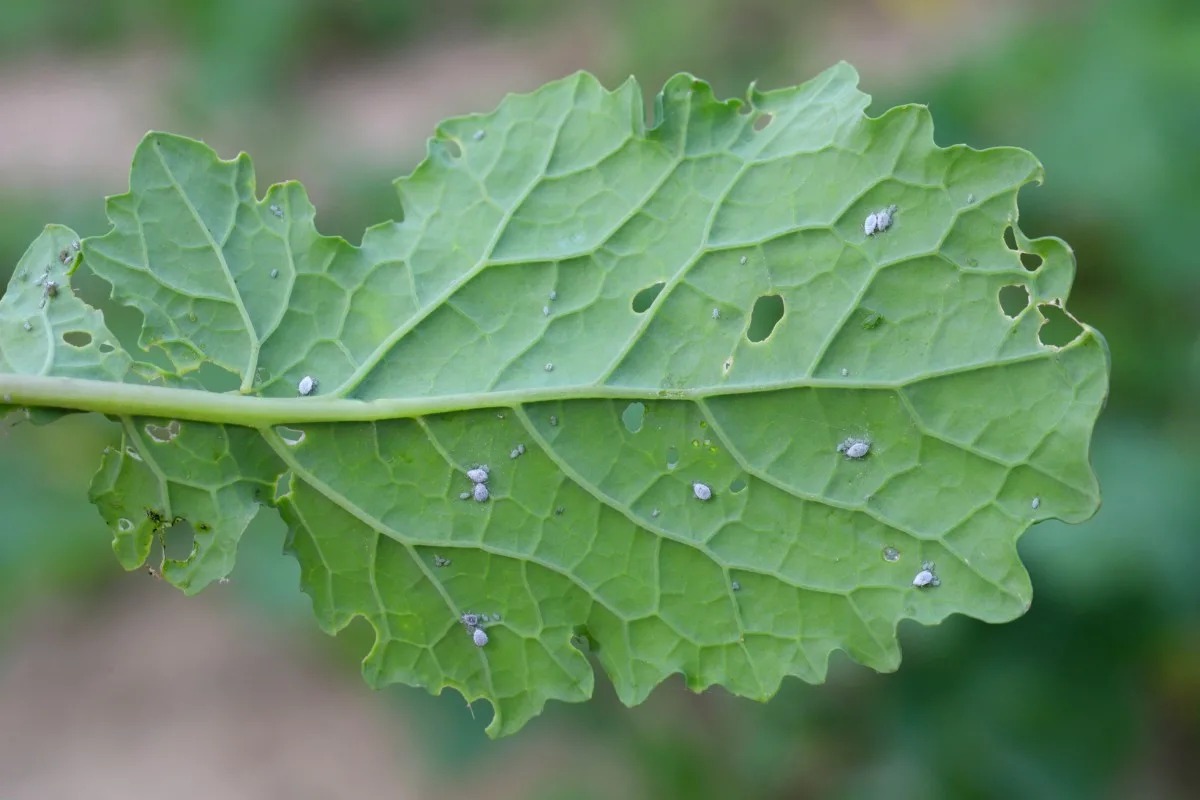
1. Weakened or Disfigured Plants
Aphids are teeny things, and since they’re often green, they can be difficult to see on plants because they blend right in.
Look for them on the underside of young leaves or freshly sprouted stems. They tend to gather on new succulent growth.
Most of the time, their feeding won’t cause any visual clues on the plant itself. It may stop growing as vigorously as the rest.
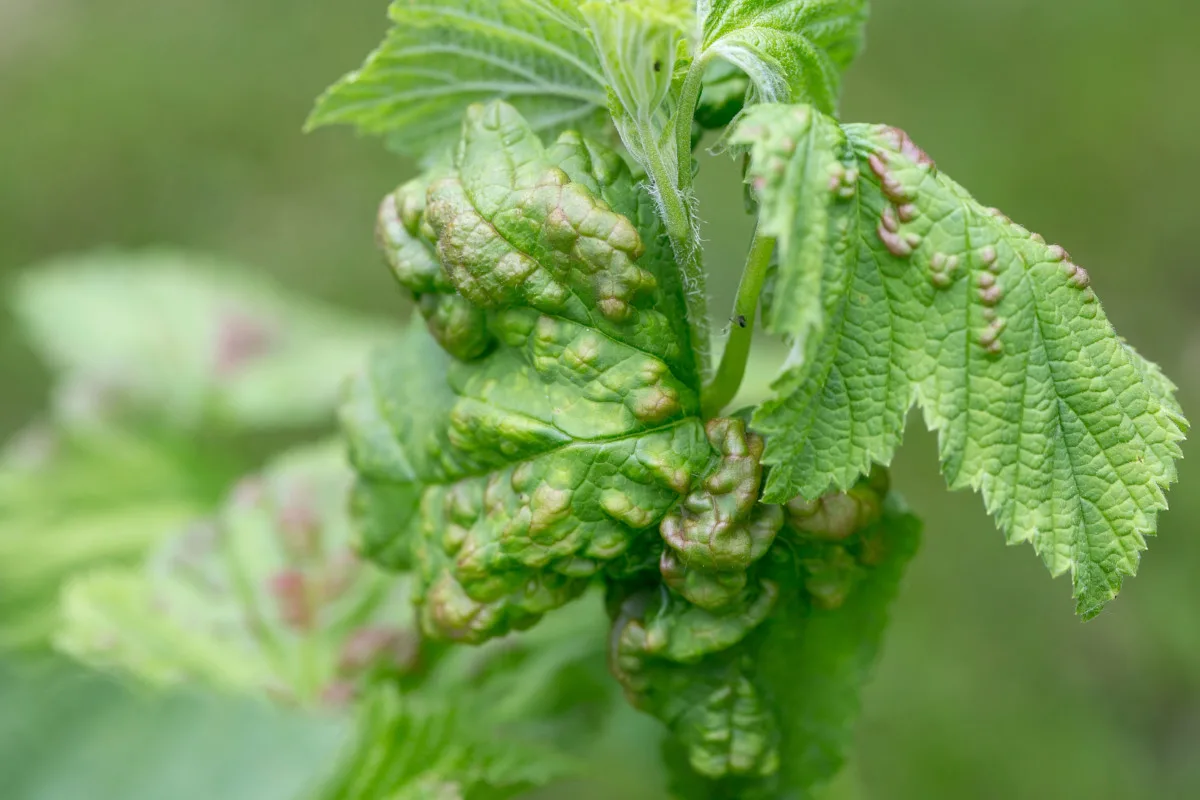
In severe infestations or in plants sensitive to aphid feeding, leaves will yellow, twist, or curl.
Some aphid species create galls, an abnormal swelling of plant tissues on stems, leaves, or roots. Aphid colonies reside inside the gall which protects them as they feed on the plant sap.
2. Small White Flakes Around Plants
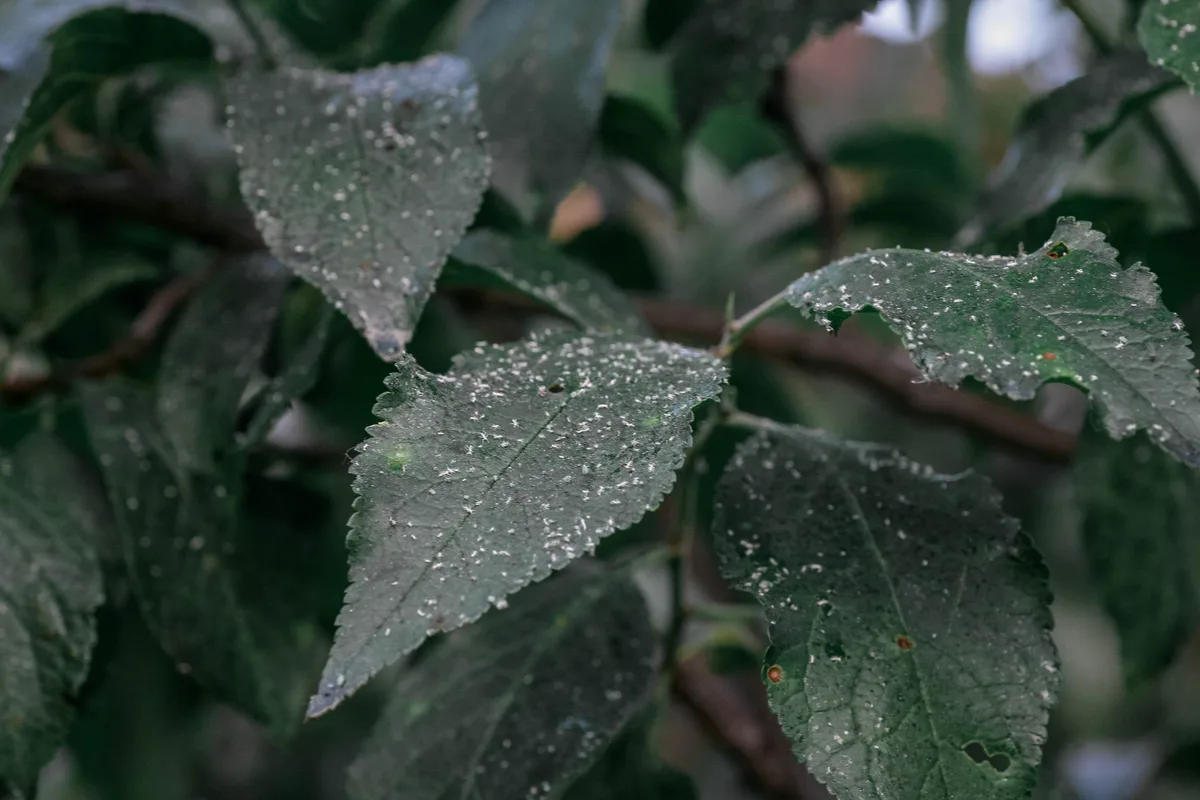
After being born, nymphs pass through four stages of development before maturing into adult aphids.
Each time they metamorphosize, they grow a little larger and cast off their skins.
A colony of nymphs will molt and shed their exoskeletons continuously, leaving behind what looks like small white flakes on the ground.
3. Honeydew on the Foliage
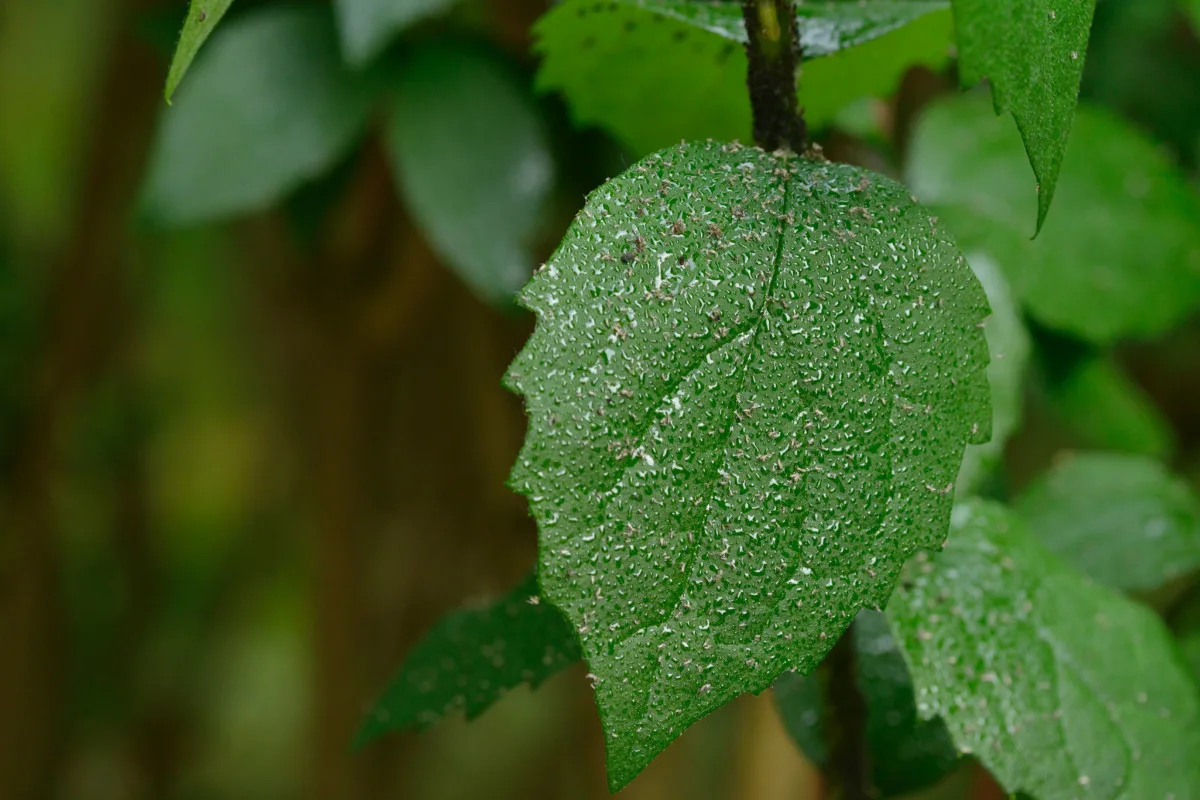
As aphids feed on the plant’s inner juices with their needle-like proboscis, they also inject their own saliva into the host plant. This aids in their digestion of the plant’s sugars.
Plant sugars that can’t be digested by aphids pass through them in the form of a sugary waste.
This sticky and shiny substance is essentially aphid poop – and they produce quite a lot of it!
Honeydew is easy to spot covering leaves, stems, and bark. In tree-feeding aphids, honeydew will collect on surfaces below the tree canopy – on driveways, cars, sidewalks, patio furniture, and understory plants.
Honeydew is beloved by ants but yellow jacket wasps and honey bees will also flock to it as a food source. Noticing an uptick in other insect activity around your plants is a good indication that the sticky stuff is honeydew.
Aphids aren’t the only insects that produce honeydew – mealy bugs, whiteflies, and soft scale do as well – but it’s as good a clue as any that aphids are present in the garden.
Although honeydew itself isn’t harmful to plants, it can encourage the growth of a fungus called black sooty mold.
4. Black Sooty Mold
Wherever honeydew is present, sooty mold can grow.
Blown in with the wind, sooty mold spores stick to honeydew-coated leaves, stems, branches, or fruits.
Sooty mold isn’t parasitic to the plant. It uses honeydew as its sole source of nourishment.
As the fungus progresses, it sends out dark mycelial threads that appear as a charcoal black film over plant foliage. It can eventually heavily coat the foliage and block out sunlight.
Because it doesn’t attack the plant itself, sooty mold damage is usually minimal and mostly cosmetic.
You can wash it off plant foliage with soapy water, but it will keep coming back until you get the honeydew-producing insect under control.
5. Plant Viruses
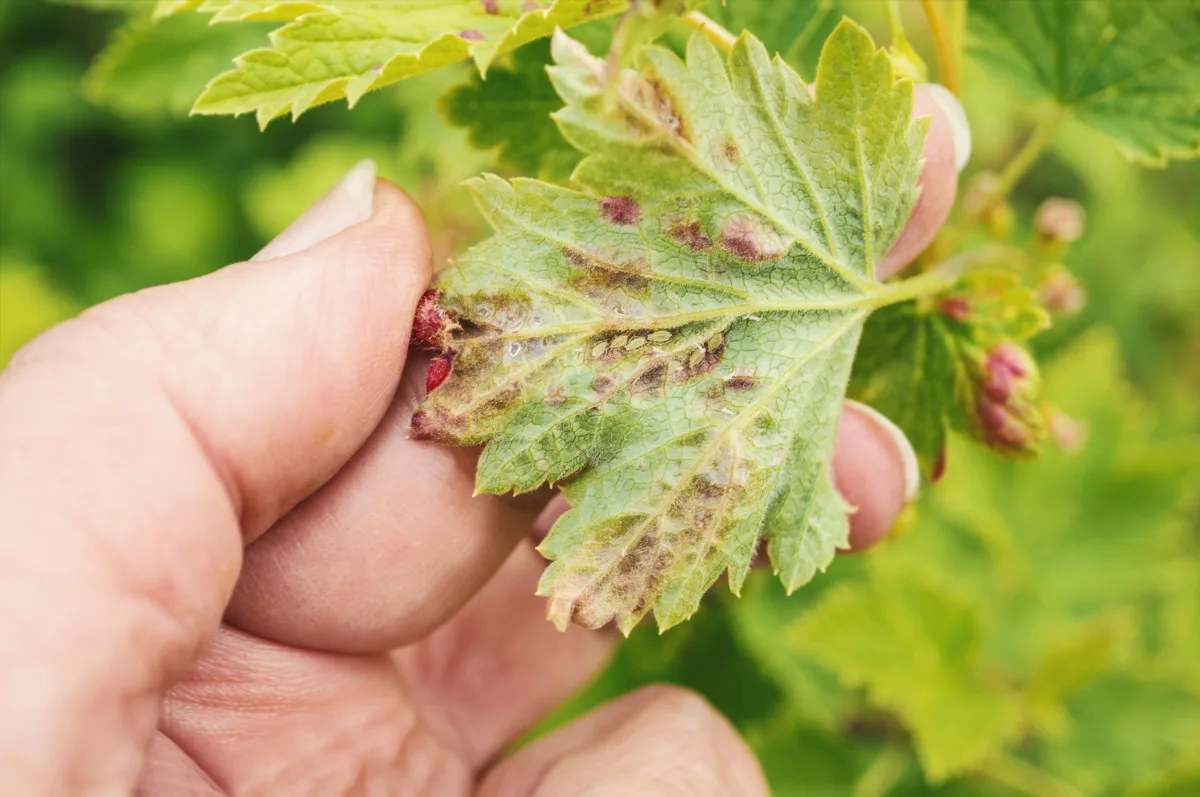
The worst thing about aphids isn’t necessarily the xylem sucking, which can prevent plants from truly thriving. Nor is it the copious amounts of honeydew they produce, which creates the perfect culture for fungi to gain a foothold in your garden.
The most serious harm aphids can inflict is infecting plants with disease.
Aphids are the most common vector for plant viruses and can carry and transmit more than 100 different viral diseases to plants.
Every time aphids feed with their stabby mouthparts, virus transmission can occur.
Even plants without an aphid colony can be sickened. Winged adults searching for a new host will taste and sample various plants before choosing the final feeding spot.
The viruses that aphids are capable of spreading vary in severity. Alfalfa mosaic virus, strawberry mottle virus, and blueberry shoestring virus are some that can stunt growth, reduce yields, and cause discolored or distorted foliage.
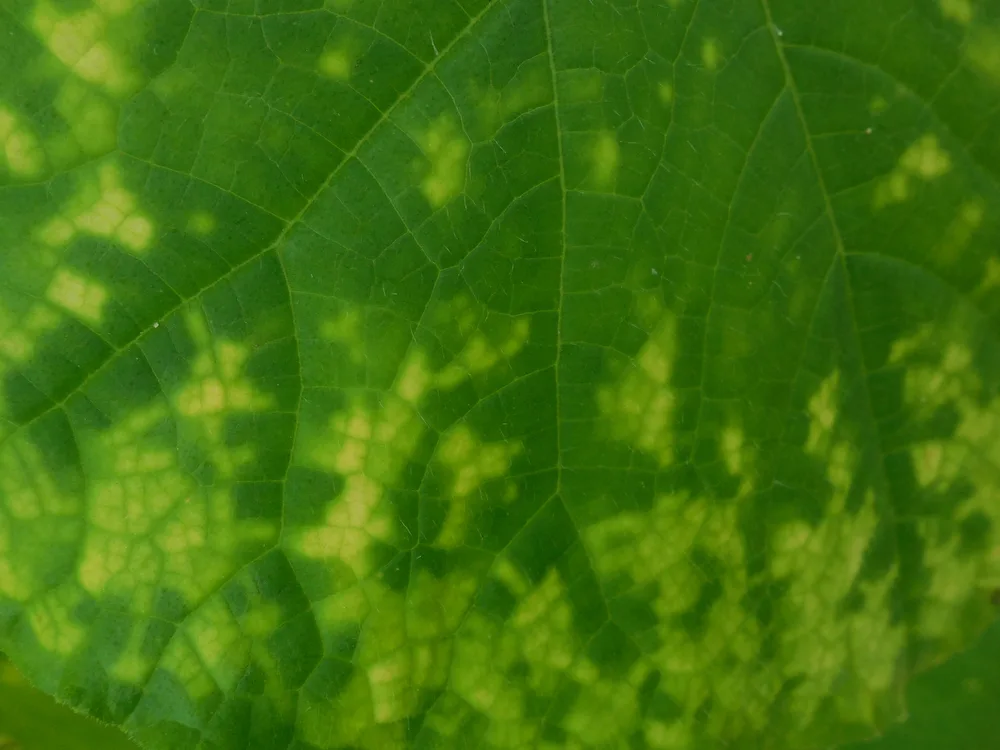
But the most serious is cucumber mosaic virus – a disease that attacks not only Cucurbits but also bean, tomato, pepper, lettuce, beet, and celery plants. Over 80 species of aphids are possible reservoirs of the virus. Once introduced by aphids, cucumber mosaic can spread from plant to plant on its own.
There’s no treatment for cucumber mosaic and severely infected plants will have to be pulled up and destroyed.
10 Ways to Protect Your Plants from Aphids
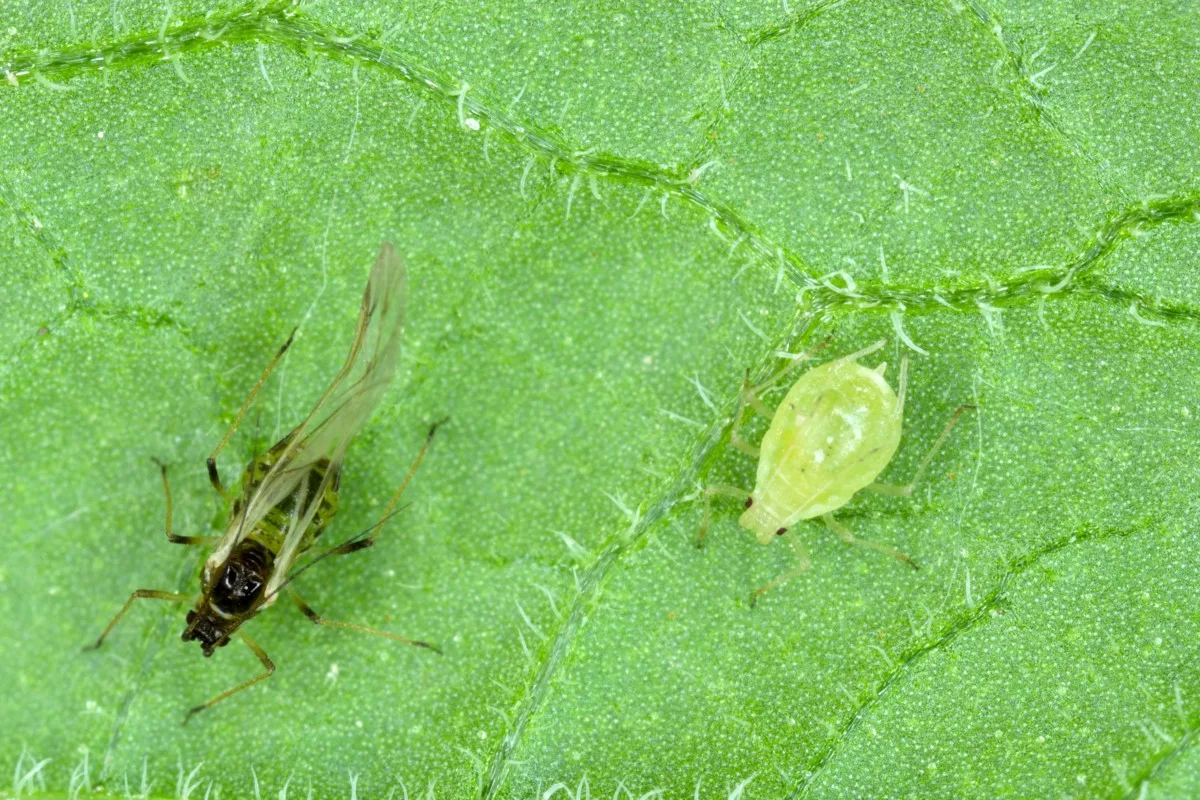
1. Remove Nearby Weeds
Keeping your yard free of weeds isn’t only for appearance’s sake – it can go a long way in preventing aphids and other agricultural pests from invading your space.
Clearing weeds is definitely a marathon and not a sprint. From the earliest days of spring to deep into fall, pull up any weeds that encroach into garden beds and the surrounding area.
Removing weeds in early spring will eliminate any aphid eggs that may have overwintered around the garden. Weeding through the rest of the season will limit potential host plants that can be used as a launching point for winged aphids to find your crops.
Be sure to get rid of any wild mustard or sowthistle you see – these are two of aphid’s favorite weeds.
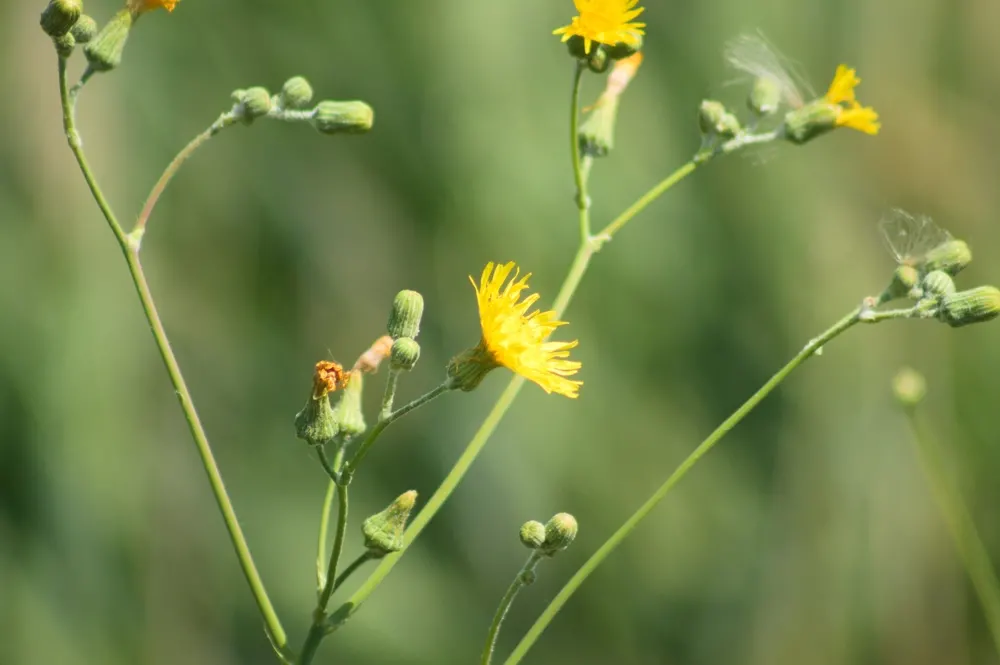
2. Closely Monitor Your Plants
Take a few minutes each week to take a close look at your plants.
Inspect for overall plant vigor and health. Stunted plants, delayed flowering, discolored leaves, and abnormal growth are all causes for concern.
Check the underside of leaves as well as stems, branches, and shoot tips for aphid activity.
Look for the other signs of aphids – honeydew splattered over the foliage, white flaky skins scattered over the soil, and an increase in ant activity.
3. Prune Out Small Colonies
When you spot aphids early on, there’s a good chance the colony will be small and localized to a single plant.
To control an infestation still in its infancy, simply prune back all afflicted leaves or stems to remove the aphids.
Isolate the pruned bits right away by placing them in a sealed bag and tossing it in the garbage.
If pruning back the plant would do more harm than good, you can crush aphid colonies by hand. Aphids inside galls or other awkward nooks are easily smushed by putting a little pressure on the site.
4. Blast Them With Water
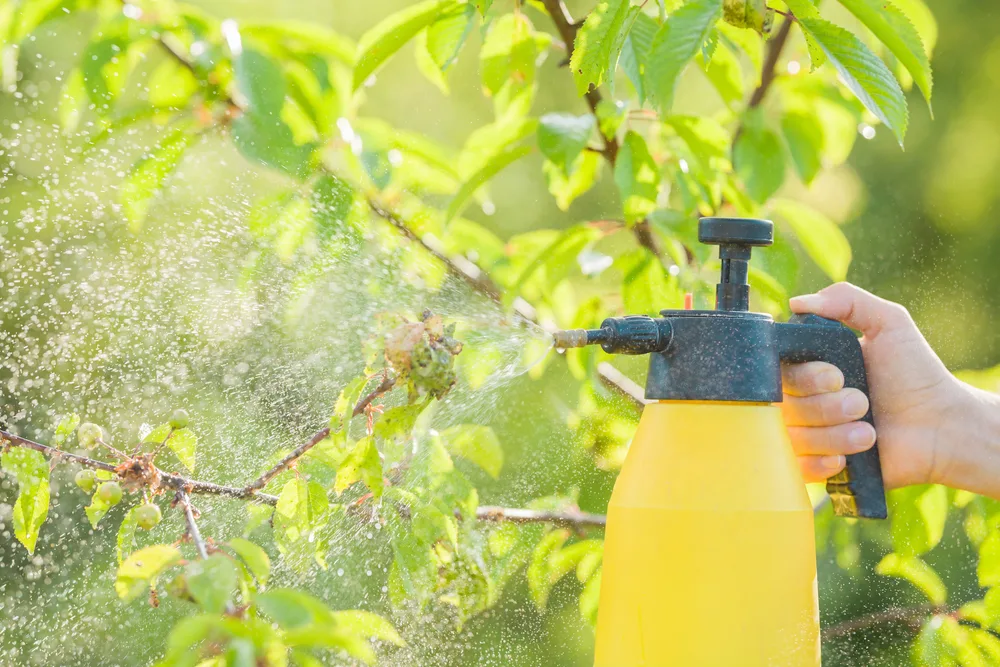
As an infestation progresses, aphids will spread to other plants in the garden and their colonies will become much more established.
A strong blast of water is a really effective method to physically separate them from the host plant. It’ll also clear away honeydew and any sooty mold too. Once aphids are on the ground, they won’t be able to climb back on the plant.
Use a garden hose with a sprayer nozzle on the jet or stream setting and thoroughly douse the plants, making sure to spray the underside of leaves and other aphid hiding spots.
Never use a high-pressure washer – the spray would be far too powerful and would likely obliterate your plants.
Hose down plants in the morning so the foliage can fully dry before nightfall.
5. Spot Treat with Soapy Water
Plain water with a few drops of Castile soap is a potent poison for soft-bodied pests like aphids.
In order to work, insecticidal soap sprays need to come in direct contact with the entire aphid colony. Once spritzed, they will dry out and die.
Although soapy sprays are a natural treatment that won’t harm plants, it’s still a pesticide that can affect other insects too. Minimize drift by only spot treating areas where aphids are found congregating.
To mix up insecticidal soap, add 1 tablespoon of Castile soap per quart of water and transfer to a spray bottle. Thoroughly soak aphid-infested stems, shoots, branches, and the tops and bottoms of leaves.
Insecticidal soaps are only effective while wet. You’ll need to reapply this solution every 2 to 3 days for a couple of weeks or until you notice the aphid population sharply decline.
6. Apply Neem Oil
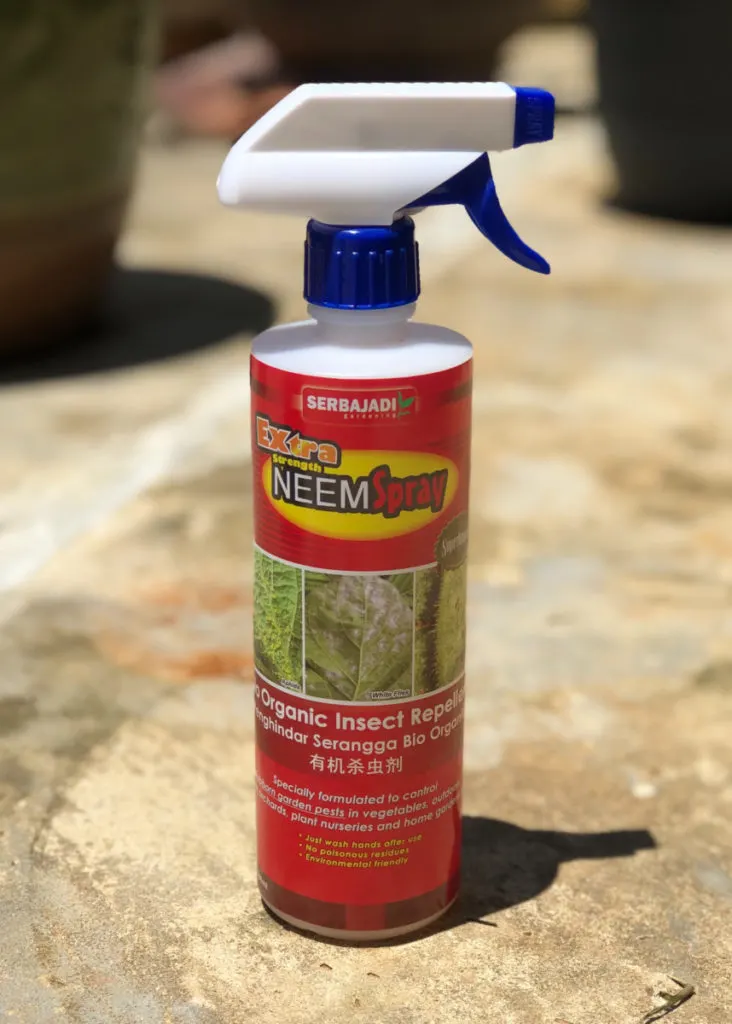
Neem oil is a natural pesticide and repellent that’s derived from the seeds and fruit of the neem tree.
The active compound in neem oil is azadirachtin, a chemical that stops pests from feeding and disrupts hormones so they can’t grow or lay eggs.
It works on a wide range of foliage-feeding pests, including aphids. Because neem oil is targeted to plant foliage, it won’t harm birds or other beneficial wildlife as long as it isn’t directly applied to flowers or fruit.
Diluted neem oil is effective on active aphid infestations but it works slowly. Aphids will stop feeding and eventually die.
Sunlight, heat, and rain will degrade neem oil’s efficacy and it will need to be reapplied every 1 to 2 weeks.
7. Hold the Nitrogen
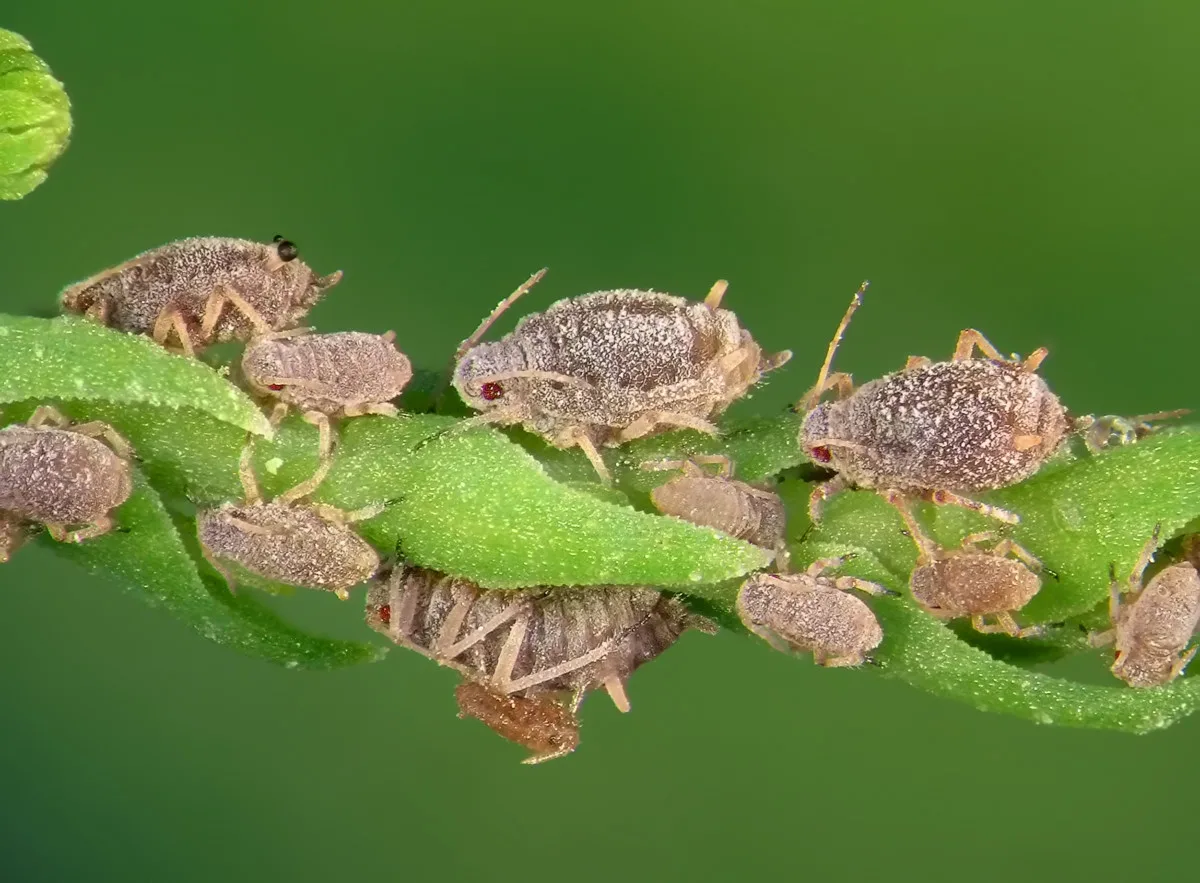
Aphids are especially fond of new and nutritious succulent growth.
Since nitrogen boosts fresh flushes of leaves, stems, and branching, fertilizing plants colonized by aphids will only give them more and better food sources.
Until you have the aphid problem under control, hold off on feeding plants with high nitrogen fertilizers.
You can resume your fertilization schedule when all colonies have been dispatched. Use smaller amounts of plant food at first and keep monitoring for new aphid outbreaks.
8. Plant Some Aphid Repellents
When it comes time for winged aphids to take to the skies and seek out a new brooding spot, they primarily use smell to locate and select host plants.
These herbs are incredibly useful for messing with the aphid’s olfactory senses. Some mask the odor of hosts that would normally be prized by aphids. Others release volatile organic compounds that interfere with their functioning.
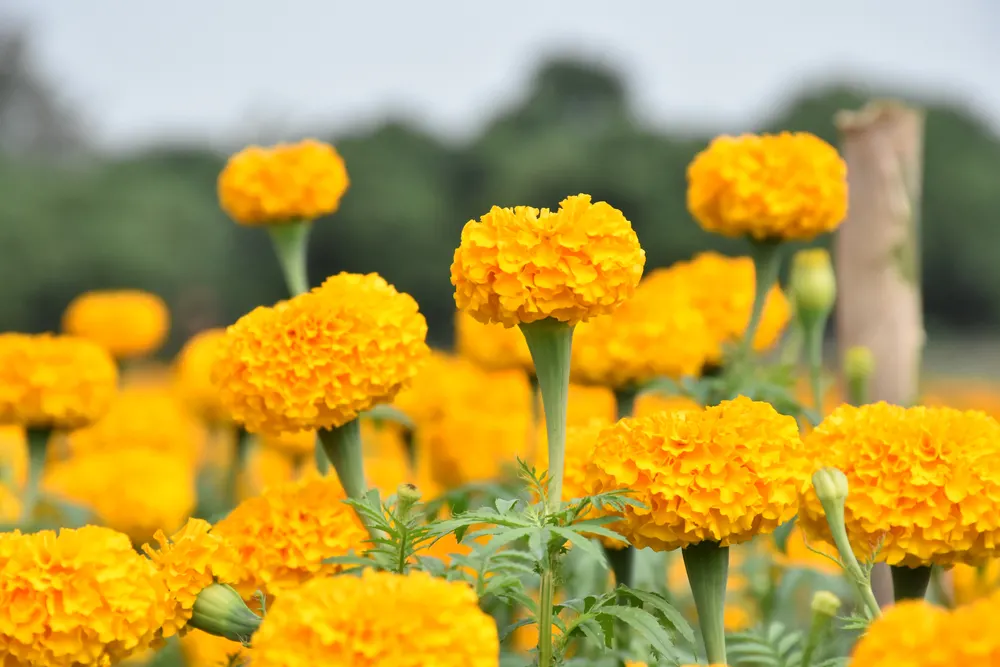
- Chives
- Basil
- Rosemary
- Catnip
- Lavender
- Dill
- Coriander
- French marigold and pot marigold
- Garlic
- Onion
- Summer savory
Plant these around the garden as an added layer of protection against aphids and other interlopers.
9. Use Trap Crops
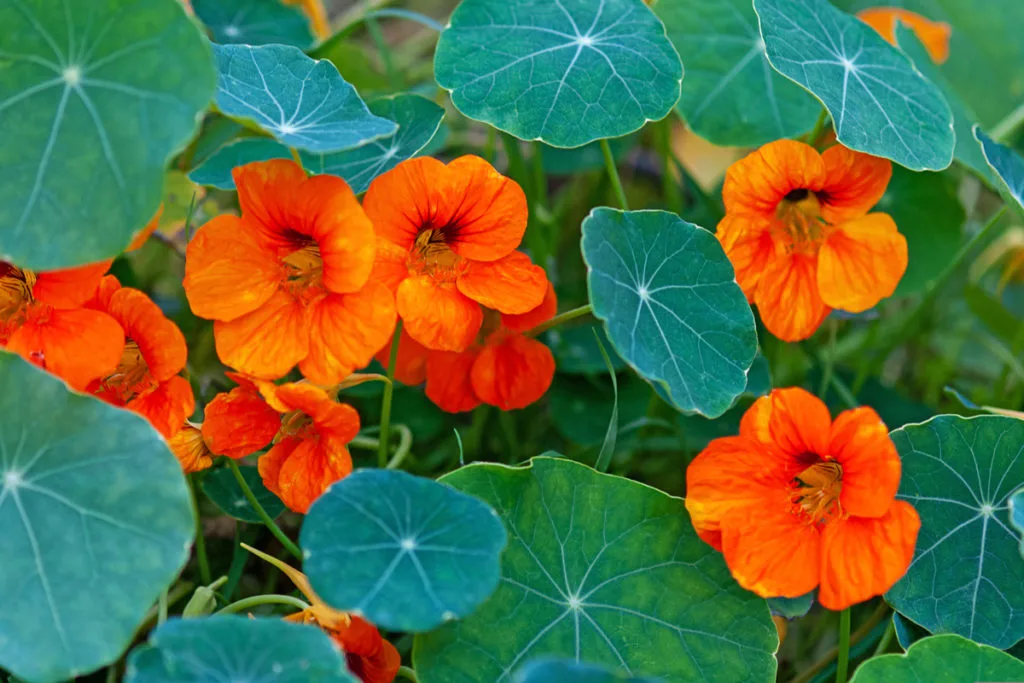
Trap cropping is a clever way to keep pests off your valued plants.
Mustards and nasturtiums are highly attractive to aphids. Plant these near the garden and check the foliage often for aphid activity.
If your trap crop becomes heavily infested with aphids, prune plants back to remove colonies. This will help keep their population in check and prevent them from hopping over into the rest of your garden.
That said, having at least some aphid presence will encourage their natural predators to patrol the garden.
10. Attract Aphid Predators
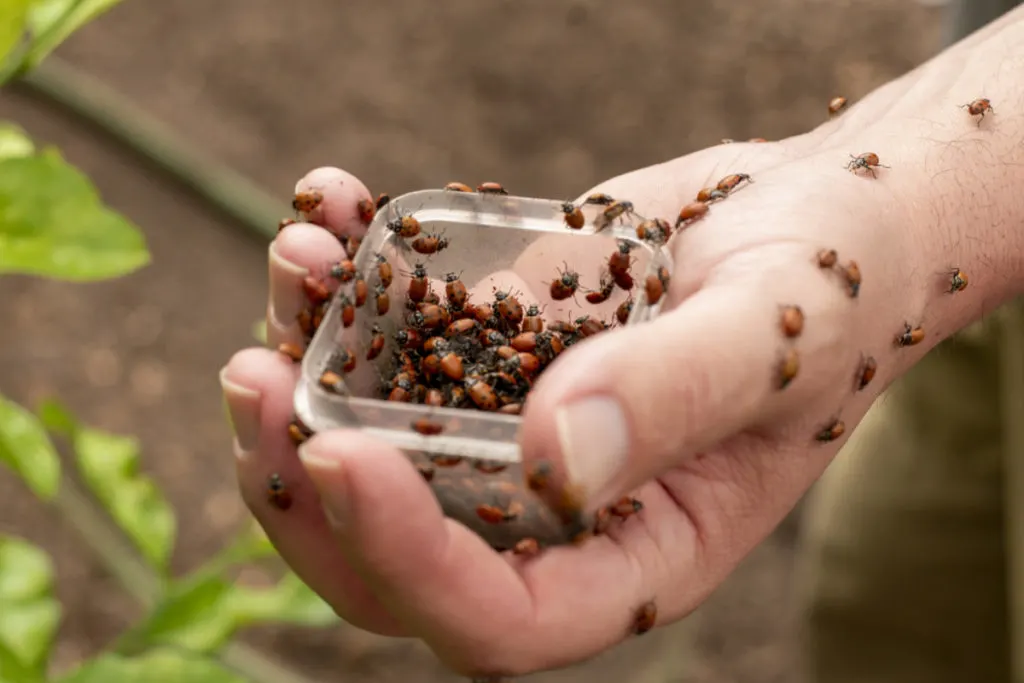
We’ll never rid ourselves of aphids completely – and nor should we, they are important members of the food web!
Several beneficial insects rely on aphids as an essential part of their lifecycle. The larvae of ladybugs, hoverflies, lacewings, aphid midges, and wasps use aphids and other soft-bodied insects as an important food source.
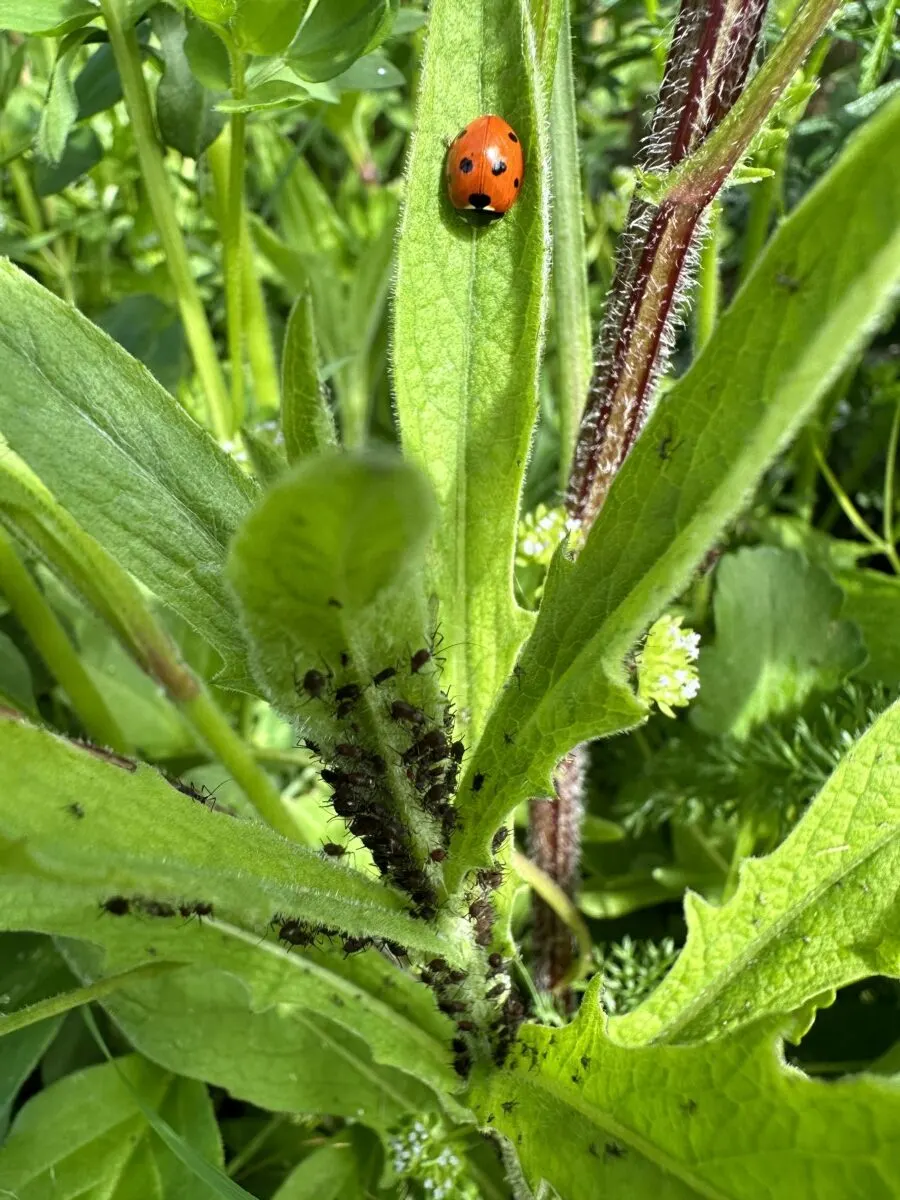
Wild birds, spiders, and adult ladybugs will also feast on aphid nymphs and adults.
Make your outdoor spaces more attractive to aphid’s foes by planting small-flowered herbs such as yarrow, fennel, mint, chicory, lovage, and dill.
You can also buy and release ladybugs in your garden to give yourself a head start.
Rewilding your garden with native perennials will ensure your lands are frequently visited by these most welcome guests.

Get the famous Rural Sprout newsletter delivered to your inbox.
Including Sunday ramblings from our editor, Tracey, as well as “What’s Up Wednesday” our roundup of what’s in season and new article updates and alerts.

